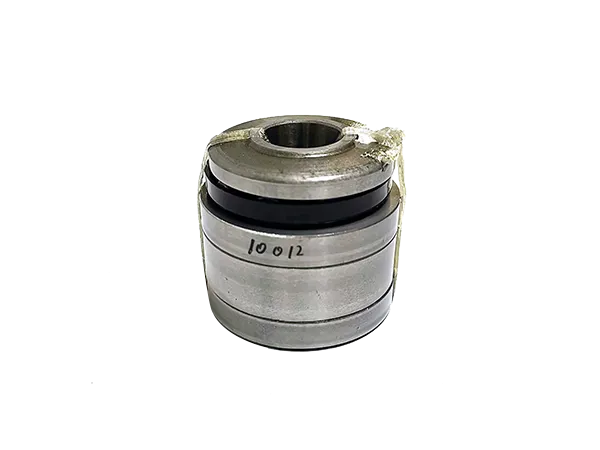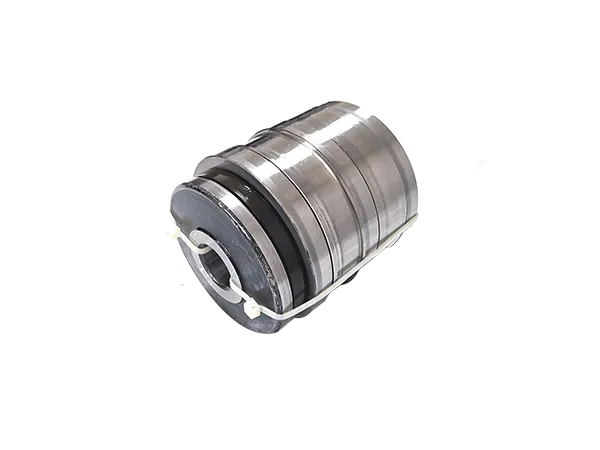Introduction
Tandem bearings, specifically the five-row variant, are essential components in various industrial applications that require high precision and reliability. As multi-row bearings, they provide enhanced load-carrying capacity and stability, making them ideal for demanding environments. This article explores the advantages, applications, installation processes, and key features of five-row tandem bearings.
Advantages of Five-Row Tandem Bearings
- Enhanced Load Capacity: The arrangement of five rows allows for the distribution of loads across multiple rolling elements, significantly increasing the bearing’s overall load capacity. This is particularly beneficial in applications involving heavy machinery and equipment.
- Improved Stability: With more contact points between the rollers and races, five-row tandem bearings exhibit superior stability compared to single or two-row bearings. This reduces the risk of misalignment and wear, extending the lifespan of both the bearings and the machinery they support.
- Reduced Maintenance Needs: The robust design of five-row tandem bearings typically results in lower wear rates, which translates to less frequent maintenance requirements. This can lead to reduced downtime in industrial operations and lower overall operational costs.
- Versatile Design: These bearings can be customized for various applications, ensuring compatibility with different types of machinery. Their versatile design enables them to handle both radial and axial loads, further enhancing their utility.
- Precision and Reliability: In environments where precision is paramount, five-row tandem bearings deliver reliable performance, maintaining accurate alignment and motion even under heavy loads and challenging operating conditions.
Applications of Five-Row Tandem Bearings
Five-row tandem bearings find applications across a range of industries, including:
– Heavy Machinery: In industries such as construction and mining, five-row tandem bearings are used in equipment like excavators, bulldozers, and cranes. These applications benefit from the bearings’ enhanced load capacity and durability.
– Wind Turbines: These bearings are utilized in wind turbine gearboxes, where they manage significant radial and axial loads while ensuring stable operation over extended periods.
– Railway and Transportation: In rail vehicles, five-row tandem bearings are essential for wheel sets, where they provide the necessary strength and stability required for high-speed travel and heavy loads.
– Marine Applications: The maritime industry employs these bearings in propulsion systems and other critical components, capitalizing on their ability to withstand harsh environments and high stress.
– Aerospace: In aerospace applications, five-row tandem bearings are crucial for maintaining the integrity and functionality of engines and landing gear, where reliability and high-performance standards are non-negotiable.
Installation of Five-Row Tandem Bearings
Installing five-row tandem bearings requires careful attention to detail to ensure optimal performance:
- Preparation: Before installation, ensure that the bearing surfaces and housing are clean and free from contaminants. Any debris can cause failure or reduce the bearing’s lifespan.
- Alignment: Proper alignment is critical. Use precision tools to align the bearing with its designated shaft and housing. Misalignment can lead to uneven wear and reduced load-carrying capacity.
- Lubrication: Lubrication is essential for reducing friction and wear. Use high-quality lubricant that is compatible with both the bearing material and the working environment. Follow the manufacturer’s recommendations for lubrication intervals.
4.Mounting: Carefully mount the bearing in its housing, ensuring that it is seated correctly. Use appropriate tools to avoid applying excessive force, which could damage the bearing.
- Testing: After installation, conduct a thorough test of the bearing’s operation. Check for unusual noises or vibrations that may indicate misalignment or improper installation.
Key Features of Five-Row Tandem Bearings
- Multi-row Design: The five-row configuration allows for a higher number of rolling elements, facilitating greater load distribution and enhancing performance.
- Material Composition: High-quality materials are often used for manufacturing these bearings, providing resistance to wear, corrosion, and extreme temperatures.
- Sealing Mechanisms: Many five-row tandem bearings include advanced sealing systems that protect the internal components from contaminants and retain lubrication.
- Customization Options: Depending on the application, five-row tandem bearings can be manufactured to specific sizes and tolerances, ensuring a perfect fit for various machinery requirements.
- Performance Metrics: Typically designed to meet or exceed various industry standards, five-row tandem bearings often possess performance metrics that are meticulously analyzed to ensure they can withstand demanding operating conditions.
Conclusion
Five-row tandem bearings are a cornerstone in the engineering of heavy-duty machinery, offering remarkable advantages in load capacity, stability, and maintenance. Their versatility allows for a broad range of applications across various industries, making them invaluable to modern engineering. When installed and maintained properly, these bearings can significantly enhance machine performance, reliability, and lifespan, reinforcing their role as essential components in high-performance environments. For industries reliant on efficiency and precision, understanding and utilizing five-row tandem bearings is a critical step towards achieving operational excellence.




